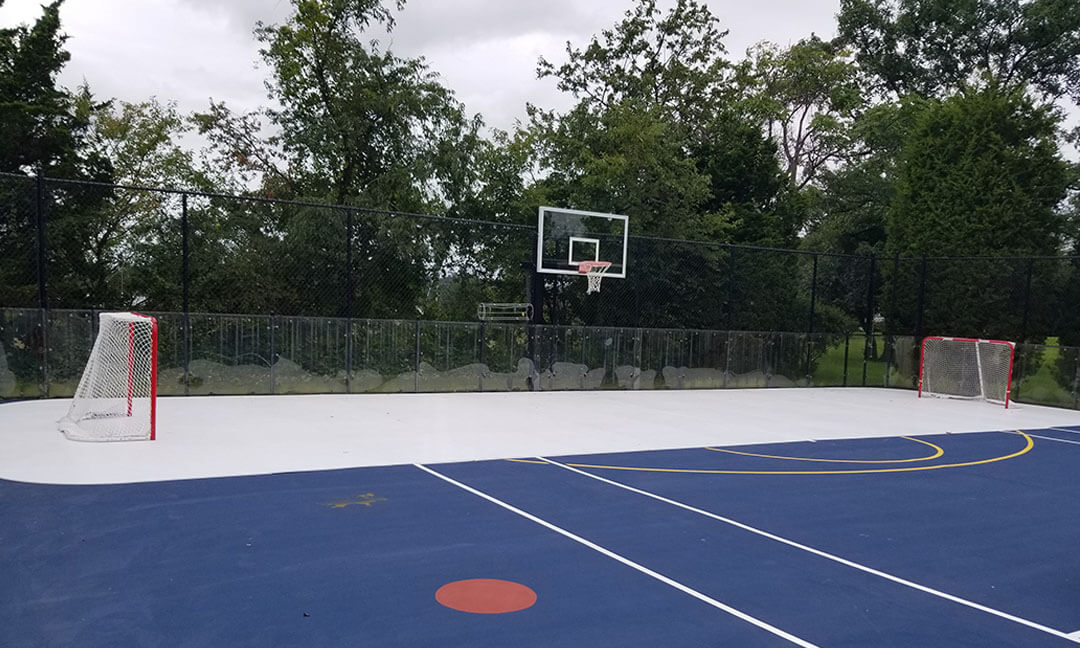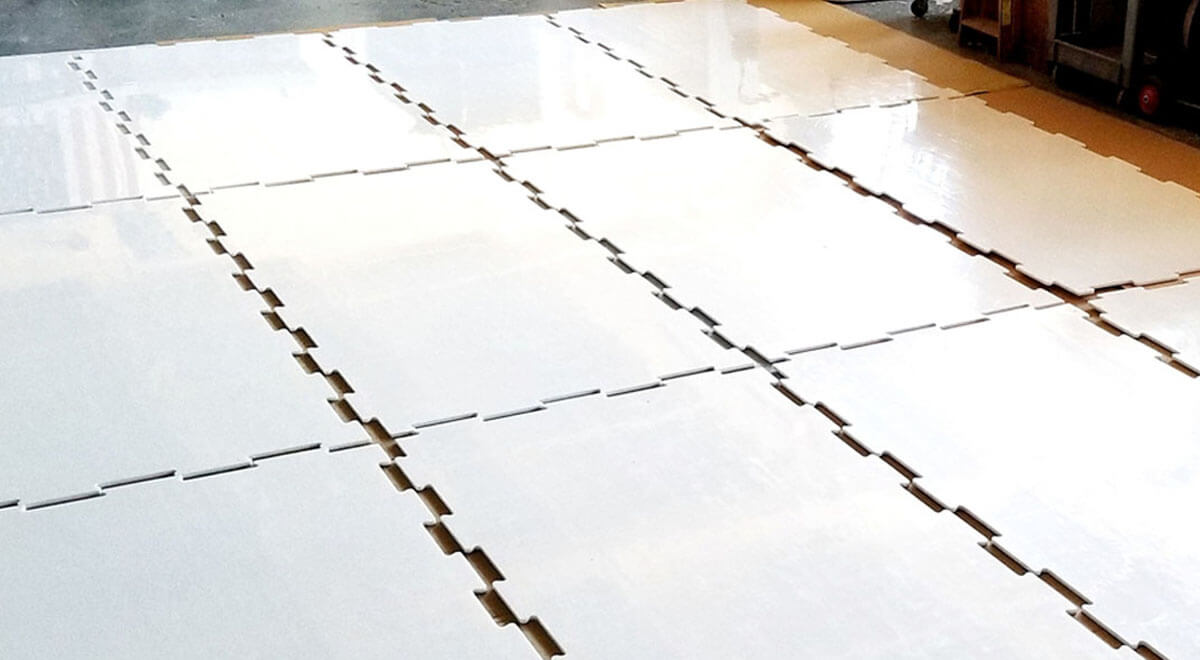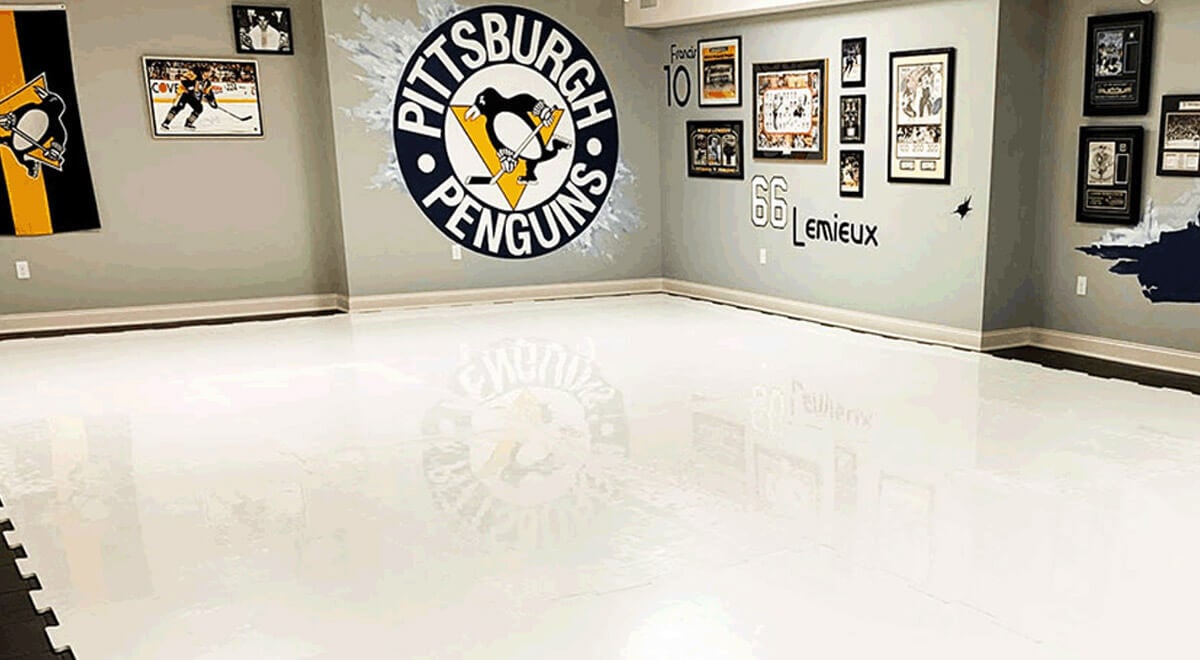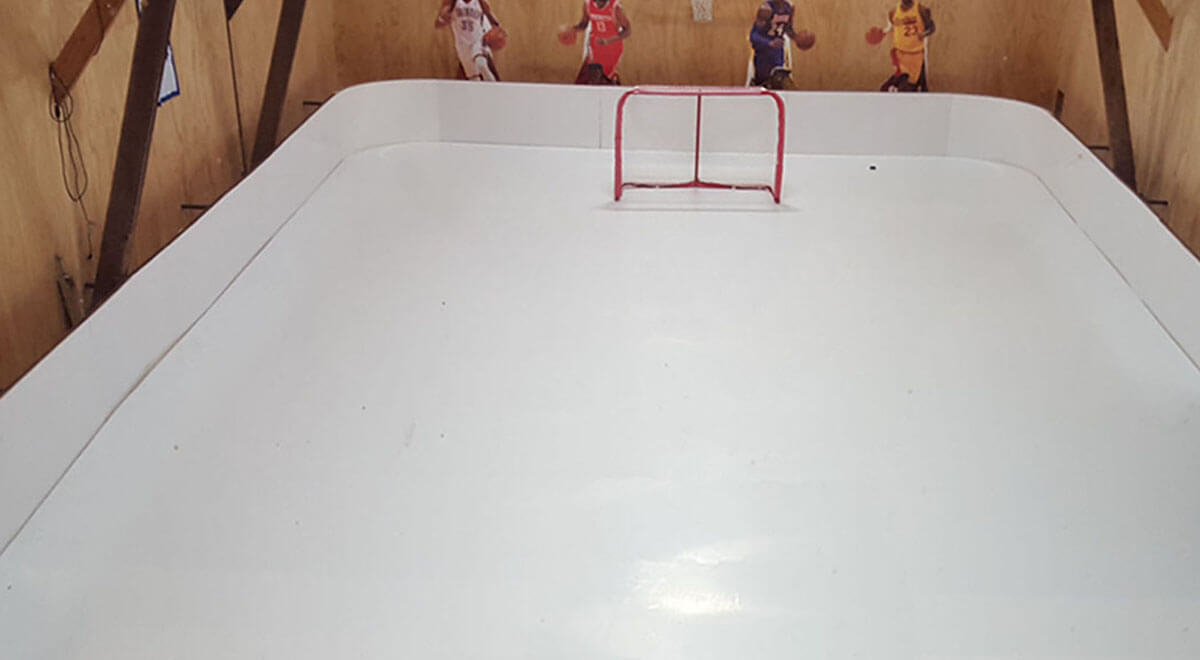Should Your Synthetic Ice Rink Be Indoors or Outdoors
Should your synthetic ice rink be indoors or outdoors?
A few decades ago, this was not an option if you wanted your personal ice rink.
Ice rinks were always outdoor options as you would skate on a frozen lake or create your backyard ice rink.
These backyard ice rinks need several steps.
Take some tarp, some wood, lots of water, and the right temperature.
If everything goes right, you should have a rink that lasts the winter.
The creation of refrigerated rinks meant that ice could now go indoors.
You currently have hockey, figure skating, curling, and other ice sports indoors.
Indoor refrigerated ice rinks eventually came to the home, allowing smaller spaces this luxury.
However, refrigerated rinks can be expensive and difficult to set up.
For many, this is a niche, luxury item mainly for the rich that love skating.
Synthetic Ice Changed the Game.
At some point, you must have heard about – or skated on – synthetic ice (or artificial ice).
The surface (or panels) are made of a skatable polyethylene material that connects on the floor like puzzle pieces.
There are many providers (and a few imitators) currently being sold on the market.
PolyGlide Synthetic Ice is manufactured with a proprietary blend that provides optimal glide and performance and limits skate blade wear.
These materials allow for the best skating experience.
Synthetic ice panels were mainly used in malls or large training centers.
However, advancements in design allow them to be customizable.
Now, the everyday skater can have a rink at home if they choose.
Best of all, these rinks could be indoors or outdoors.
The Benefits of Synthetic Ice Rinks
Synthetic ice rinks have distinct advantages over their refrigerated or natural counterparts, whether indoors or outdoors.
- You won’t need to depend on the weather like natural rinks, for starters. These rinks need the First Freeze to make their rink solid. Your synthetic ice rink comes right out of the box, ready to skate.
- You’ll save the water and energy it takes to set up alternative rinks outdoors. With your synthetic ice rink, you can install it indoors or outdoors while saving your water bill. This simple change makes synthetic ice a long-term, ‘green’ option.
- High-quality synthetic ice is competitively priced. However, the cost is nothing compared to the costs involved with an outdoor or indoor rink. This needs rented (or bought) refrigeration systems, installation, and maintenance.
- Synthetic ice rinks are highly durable, lasting up to 10 years or more with proper care. Imagine spending money on other rinks over ten winters!
- Rinks are customizable. You can have circular rinks, rectangular rinks, and much more. Since you’ll have tiles at specific dimensions, space is not an issue.
Synthetic ice is as simple as ordering and installing, but you’re here to decide whether your rink should be inside or outside.

Should My rink be Indoors or Outdoors?
Outdoor and indoor rinks have similar benefits.
Both are great ways to improve your endurance and strength.
For instance, skating improves your lower body and core.
It’s also essential to improve your skills, speed, and agility.
They are both easy to install and maintain.
Despite these similarities, each location will have some added benefits.
Synthetic Ice Rink Indoors - Benefits
A synthetic ice rink indoors may sound like a massive rink for competitive hockey, but it isn’t.
When we use the term ‘rink,’ we mean any space that allows you or others to skate, even if it’s a small distance.
If you have a large room, barn, or indoor complex, that’s great.
However, indoor rinks have the advantage of scaling down, so a spare bedroom or garage is excellent too.
If you have kids passionate about hockey or figure skating, you can create a small indoor rink so they can practice specific skills like stick work or shooting.
Indoor rinks are also out of the elements.
The cold is one of the charms of ice skating, but some people prefer to avoid the chilly weather.
An indoor ice rink gives you more control over the temperature or swings in the weather like rain.
Falling snow can also freeze your rink if you forget to cover it.
With an indoor rink, you can have cool (or toasty) training sessions during the winter.
Since your synthetic ice allows for training year-round, you can avoid those scorching summer days too.
You can adjust your temperature to emulate conditions in competitive play.
These rinks also have the added benefit of security and safety.
Sometimes, skating can become competitive, which is a good thing.
However, you will still want to watch your little ones to avoid injury.
An indoor skating space means the kids can be active and constructive while safely inside.
With the evolving world due to the pandemic, an indoor rink at home limits the interaction of the skaters in the house, which may be the safer option in the short term.

Synthetic Ice Rink Outdoors – Benefits
So what about outside?
When we think about at-home rinks, outdoors is where it’s at.
For starters, you can place your synthetic ice tiles almost anywhere outdoors.
Driveways, backyards, decks, and even cul-de-sacs can be converted into an outdoor rink.
We’ve even seen rinks installed on top of pools! Like indoor rinks, you have lots of flexibility thanks to set dimensions with synthetic tiles or panels.
Unlike indoor rinks, you have the possibility of scale.
Some people have large backyards that are begging for a massive outdoor rink.
Larger outdoor rinks mean skaters can build endurance and strength much faster.
Outdoor rinks allow for more skaters and even some 3-on-3 action.
This can help skaters become match-fit and more passionate about the game.
Outdoor rinks mean that skaters need to face the elements.
Skating in the cold can help them acclimate to the cold rinks of competitive play.
It may be much colder than those rinks at times, but it can help build the mental toughness that skating sports often require.
If staying exclusive is not a concern, outdoor rinks are great for community and family building.
You can invite a few neighbors, teammates, or friends to skate or play a competitive game.
An outdoor rink is also a great space for family time.
Have some fun skating on Friday night or have a chilly movie night on the rink.
When you have an outdoor rink, you’ll find more creative ways to use the space.
And you’ll enjoy the peaceful skating under the stars.

How Much Does It Cost to Build a Synthetic Ice Rink Outdoors?
If you have decided to build a large, synthetic ice rink outdoors, some costs are involved.
The cost will be decided by a few factors:
- The size of the rink
- How much you’ll use the rink
- Added touches (walls, dasher boards, etc.)
Most synthetic ice tiles are sold as a group of equally sized parts.
These parts can combine to make a small, square space for skating.
Use this information to calculate how many tiles you’ll need for the space, then factor in taxes and shipping.
If you’re confident that your rink will see daily skating and heavy traffic, you’ll want to consider larger, more durable panels.
These panels are often for commercial use and are more expensive but can last longer than tiles.
Once you have your panels, you’ll also need to think about rink walls and dasher boards.
The rink walls will prevent stray pucks and skaters from falling out of the rink.
The dasher boards will help pucks to rebound during gameplay.
Work with your synthetic ice provider to find the best rink walls and dasher boards on the market.
What About Indoors? Is the Cost the Same?
With an indoor rink, your cost will depend on the size of the space.
Most indoor rink customers will install in smaller rooms like spare bedrooms, home gyms, or garages.
These smaller spaces require just a few synthetic ice tiles.
Larger rinks will need more tiles but may not command the cost of an outdoor rink.
You can still add dasher boards, goalposts, and other training aids.
However, the overall price should be cheaper.
Go Outdoors – The Setup.
An outdoor rink can be set up with a few simple steps. First, decide on your location.
It could be most of your backyard or a smaller, outdoor area.
Next, measure the location with tape or find out the exact square footage using an app.
Before you order your tiles, you might need to check the grade of your space.
Many backyards aren’t level due to construction, for instance.
Use this simple online guide to check if your yard is level.
Skating on uneven ice leads to a poor experience and increases the chances of injury.
If it’s not level, you’ll need to get some plywood boards first before installing the synthetic ice.
Installing the ice is as simple as connecting your tiles with a rubber mallet.
To avoid injury, it is recommended to get some help for installation.
This is especially so if you’re installing panels vs. tiles.
After installing the ice, you can install the rink walls and dasher boards.
Make sure to leave a few inches of space for this installation in your measurements.
Rink walls can be plywood, but there are professionally designed walls available online, so it’s down to personal preference.
Each wall will need a small beam attached to the outside for support.
Make sure and test the integrity of the walls before any skating.
Once everything is in place, you and your kids can start skating!

Setting Up Your Indoor Rink
Some indoor spaces need much less planning and execution.
For instance, if you’re setting up in a part of your living room, you can do so without consultation with your provider.
Buy the rink out the box, install and enjoy.
Larger spaces will need more thought, but the general concept (a la outdoor rinks) remains.
Measuring your space is important as you don’t want to buy too few or too many tiles.
Both can cost extra in tiles and shipping.
When measuring the space (for example, a large room), leave a few inches to compensate for dasher boards and the room’s walls.
Synthetic ice can swell slightly in hot temperatures, and this extra space helps.
Most indoor rooms are already level so that you can install your rink with a soft mallet.
Once the boards are in place, you can install your goalpost, dasher board, or other training equipment.
Indoor rinks are great for small kids or teens looking to train specific skills, so they’ll want to use them immediately.
Both indoor and outdoor rinks need some maintenance to perform like the first time.
Clean the tiles with warm soapy water and a soft brush or Swiffer mop.
This takes off the shavings that can develop over time with metal skates.
Finally, make sure to pick up a glide enhancer or other product to keep your tiles smooth.
Reapplying this product from time to time will improve the lifespan of your tiles.
Conclusion
Indoor and outdoor rinks are just a matter of preference.
Both bring the joy of lacing up skates and having fun at home, whether that’s in the backyard or the back room.
There’s also cost and time to install a larger outdoor rink versus a smaller indoor space.
If you can work out the costs, then you can make a more concrete decision:
- Do you want a space that can bring people together to get the most out of the rink? Then go outdoors.
- Is it solely to hone specific skills in the off-season? Indoor may be best.
Assess the pros and cons outlined here, and then make the best decision based on your space and resources.
If you’re still having trouble deciding, use our Quote Questionnaire to help you get clear on your needs.
We’ve helped hundreds of skating enthusiasts build indoor and outdoor rinks of different sizes and shapes.
We will get back to you with some ideas that will best suit your needs.












